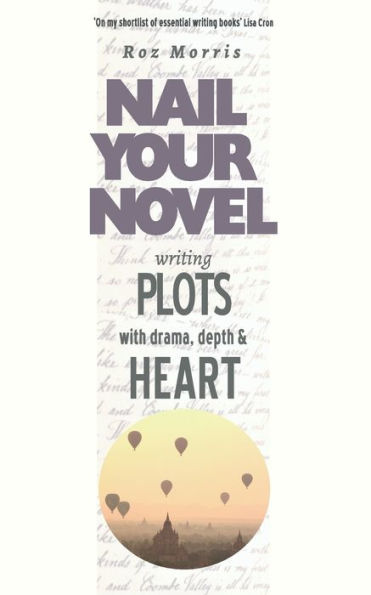

Paperback
-
PICK UP IN STORECheck Availability at Nearby Stores
Available within 2 business hours
Related collections and offers
Overview
What keeps a reader curious? It's the story. You might have a dazzling prose voice and plausible characters, but if they don't do anything, the reader is likely to lose interest. So where do you find story ideas? How do you make them into a captivating read? What's your personal vision? Do you know what genre you are best suited to write? What is literary fiction and how do you write that? How will you give your book depth without seeming preachy or bringing the plot to a standstill? What are the hidden structural patterns that ply the reader's emotions, regardless of your genre or style? How can you use them with originality? How should you begin and end? What should go in the middle? Where should you play your best twists - and what should they be? How can you write each scene so it holds the reader's curiosity? If you want to write a story that breaks with convention but still keeps readers riveted, how do you do it? Whatever type of novel you want to write, this book will show you, in down-to-earth tutorials, games and brainstorming exercises. Use it before you write and when revising, to diagnose your story's strengths and weaknesses. If you've had feedback from critique partners and editors, use it to decode what's really wrong - instead of what they think might be. Most of all, use it to find out where you already have spellbinding plot material. Discover where your best ideas are hiding and how to tell stories with drama, depth and heart.

Product Details
| ISBN-13: | 9781909905986 |
|---|---|
| Publisher: | Spark Furnace Books |
| Publication date: | 05/19/2016 |
| Series: | Nail Your Novel , #3 |
| Pages: | 230 |
| Product dimensions: | 5.00(w) x 8.00(h) x 0.52(d) |
About the Author
Table of Contents
1 Show not tell and why it rocks your plotWhat 'show not tell' is not
Emotion, not action: Raymond Chandler
When to tell
2 Fundamentals of plot
Hero journey
... and other kinds of plot
Four Cs for a good plot - curiosity, crescendo, coherence and change
Four questions to identify your genre - and how you should handle your plot
Finding coherence
3 Where plots come from
Setting and the novel's world
Character flaws and relationships
Theme
What's your story really About? Story metaphor, symbols and themes
Statement of theme - the nucleus moment
Only here for the Lear - a pitfall when creating a plot from significant literary parallels
4 Conflict, stakes and plot
5 Back story
Engaging events buried in summary of back story
Back story, secret wounds and character development
Back story holds up the beginning
Not all your back story is needed in the novel
Flashbacks
Research
6 What's happening? And is it gripping?
Events are dramatic but don't seem to matter
Dramatic act of self-sabotage not properly seeded
Nothing happens except conversations
Action is predictable
The 'you are here' scene and other smart ways with plot exposition
Mystery - playing fair
Mystery - how much?
The power of choices
7 When the reader stops believing: cliche, coincidence and convenience
Coincidence - the dos and don'ts
Obstacle overcome too quickly
Disasters and foreshadowing
Characters tread water until they save the day
Desperately seeking coincidences - The Kite Runner
Fights - the reader knows you control the outcome
Unavoidable plot events and devices
Contrived conflicts and dumb plot moves
Why doesn't the character give up?
8 Adding richness - do you need a subplot?
Subplots that steal the show
Subplot not developed
Irrelevant subplot
9 Story structure and plot points - let's twist
Principles of story structure
The midpoint - and stories with a sagging middle
10 Pace - the storyteller's spell
Back story at the beginning? Think forwards
More pace, less speed? Rushing emotional moments
Too many emotional beats in a scene
Nothing is changing
Vary the pace with a contrast scene
Kill your darlings
What to cut?
11 Endings - surprising, inevitable, right
Should you tie up all the ends?
End is unsatisfying - have you missed the most compelling conflict?
Ending outstays its welcome
The deleted epilogue from Rebecca
End is too abrupt
Don't introduce anything new at the end
12 Beginnings and prologues
When you reach the end of your revision, edit the beginning again
Prohibitions examined: starting with weather, waking up or looking in the mirror
Starting with a dream
Starts with confusing detail - fights, battles and moments of high emotion
Starting with minor characters
Hook the reader with head and heart
Prologues - yay and nay
13 Games to help you develop your plot
Thirty-nineish steps on the hero's journey: a template to find your plot
Who has the biggest struggle?
Check the point of view
Rock your structure
Creating a subplot - from where?
Work your back story (and exposition)
Several possibilities for the ending: pick the right one
14 Games 2: Where are you going? The synopsis
The fairytale synopsis - finding a plot in a muddled manuscript
How to write a synopsis with drama, depth and heart
Appendix: top nine novice mistakes with plots
Story metaphor seems far-fetched and trite
Getting muddled: when to stop adding ideas and themes
Inner conflict: keep it hidden
Uninventing the cellphone - a convenient blindness about technology
Dreams: part 2
Fantasy sequences, parallel worlds, timeslips and genre mixing
Stories within stories, books within books
Beginning belongs to a different kind of novel
Tunnel vision: writer afraid to go with the flow
Index
